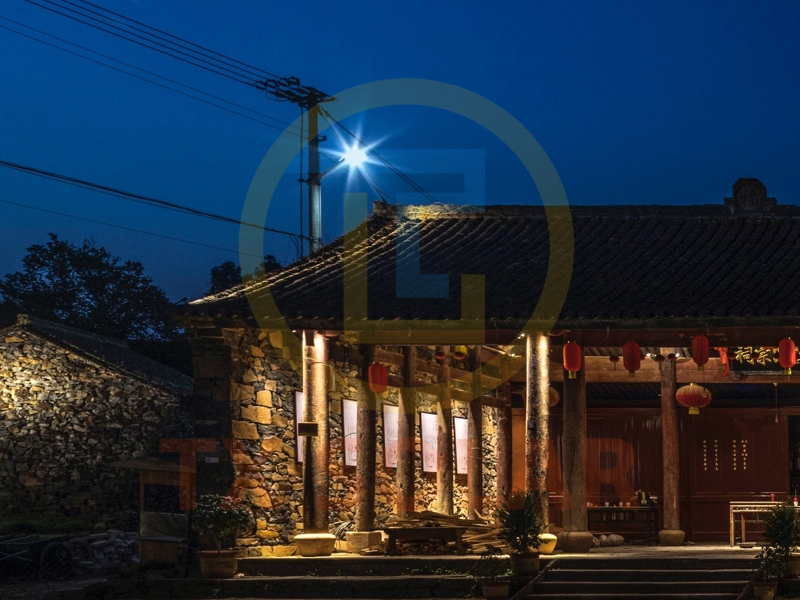In many parts of the world, rural areas face unique challenges in terms of infrastructure and access to basic services. One of the most critical yet often overlooked aspects is lighting. Adequate lighting solutions in rural areas can significantly enhance safety, improve quality of life and boost economic development. This article explores various lighting solutions tailored for rural communities, highlighting their importance and potential impact.
Importance of rural lighting
Lighting is more than just a convenience; It is a necessity that affects every aspect of life. In rural areas, where electricity supply may be limited or non-existent, a lack of proper lighting can cause several problems:
1. Safety Issues: Poorly lit streets and public spaces increase the risk of accidents and crime. Adequate lighting can deter criminal activity and provide residents with a sense of security.
2. Economic Development: Businesses in rural areas often struggle due to insufficient lighting. Well-lit commercial areas boost the local economy by attracting customers and encouraging longer shopping hours.
3. Education and Community Engagement: Well-lit schools and community centers can have extended hours to accommodate evening classes and community events. This fosters a sense of community and encourages lifelong learning.
4. Health and Wellbeing: Proper lighting can improve mental health by reducing feelings of isolation and fear. It can also make travel after dark safer and promote social interaction and community cohesion.
Types of rural lighting solutions
1. Solar street light
One of the most effective lighting solutions for rural areas is solar street lights. These systems use solar energy to power LED lights, making them an environmentally friendly and cost-effective option. Key benefits include:
- Low maintenance: Solar lights require minimal maintenance and have a long lifespan, making them ideal for remote areas.
- Energy Independent: They are not dependent on the grid, which is often unreliable in rural areas.
- Easy to install: Solar lights can be installed quickly and do not require extensive electrical infrastructure.
2. LED lighting
LED technology has revolutionized lighting solutions worldwide. In rural areas, LED lights have the following advantages:
- Energy Efficiency: LEDs consume significantly less energy than traditional incandescent bulbs, reducing electricity costs.
- Long Life: LEDs have a service life of up to 25,000 hours and do not need to be replaced frequently, which is especially beneficial in areas where replacement parts are limited.
- Versatility: LEDs can be used in a variety of applications, from street lighting to interior fixtures, making them a flexible option for rural communities.
3. Intelligent lighting system
The emergence of smart technology has opened up new avenues for lighting solutions in rural areas. Smart lighting systems can be controlled remotely and adjusted based on real-time data. Benefits include:
- Adaptive Lighting: Smart systems can optimize energy use by adjusting brightness based on the time of day or the presence of people.
- Remote Monitoring: These systems can be monitored and managed from a distance, allowing for quick response to outages or failures.
- Integration with other technologies: Smart lighting can be integrated with other smart city technologies to enhance overall community management.
4. Community-based initiatives
Involving communities in the development and implementation of lighting solutions can lead to more sustainable outcomes. Community-based initiatives can include:
- Local Workshop: Educate residents on the benefits of various lighting solutions and how to maintain them.
- Crowdfunding Project: Engage the community in a fundraising campaign to install lighting in key areas.
- Partnerships with NGOs: Work with NGOs to secure funding and expertise for lighting projects.
Challenges and considerations
While there are many lighting solutions available, several challenges must be addressed to ensure their successful implementation in rural areas:
1. Initial Cost: While solar and LED solutions can save money in the long run, the initial investment can be a barrier for many rural communities. Grants and subsidies can help alleviate this problem.
2. Infrastructure: In some cases, a lack of existing infrastructure can complicate the installation of lighting systems. Infrastructure planning and investment may be necessary.
3. Cultural Sensitivity: Lighting solutions should be designed with the cultural context of the community in mind. Involving local stakeholders in the planning process can help ensure that solutions are appropriate and accepted.
In conclusion
Lighting solutions for rural areas don’t just light up the streets; They involve enhancing security, promoting economic growth and improving overall quality of life. By investing in innovative and sustainable lighting technologies, rural communities can overcome challenges and create brighter, safer and more vibrant environments. As we move forward, these solutions must be prioritized to ensure no community is left in the dark.
Post time: Oct-12-2024

